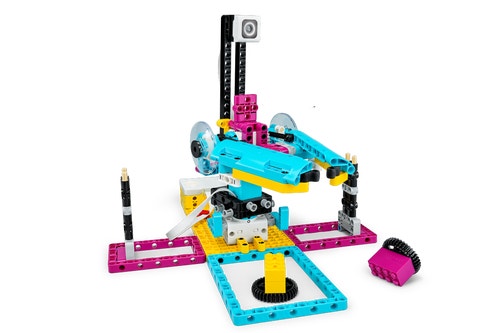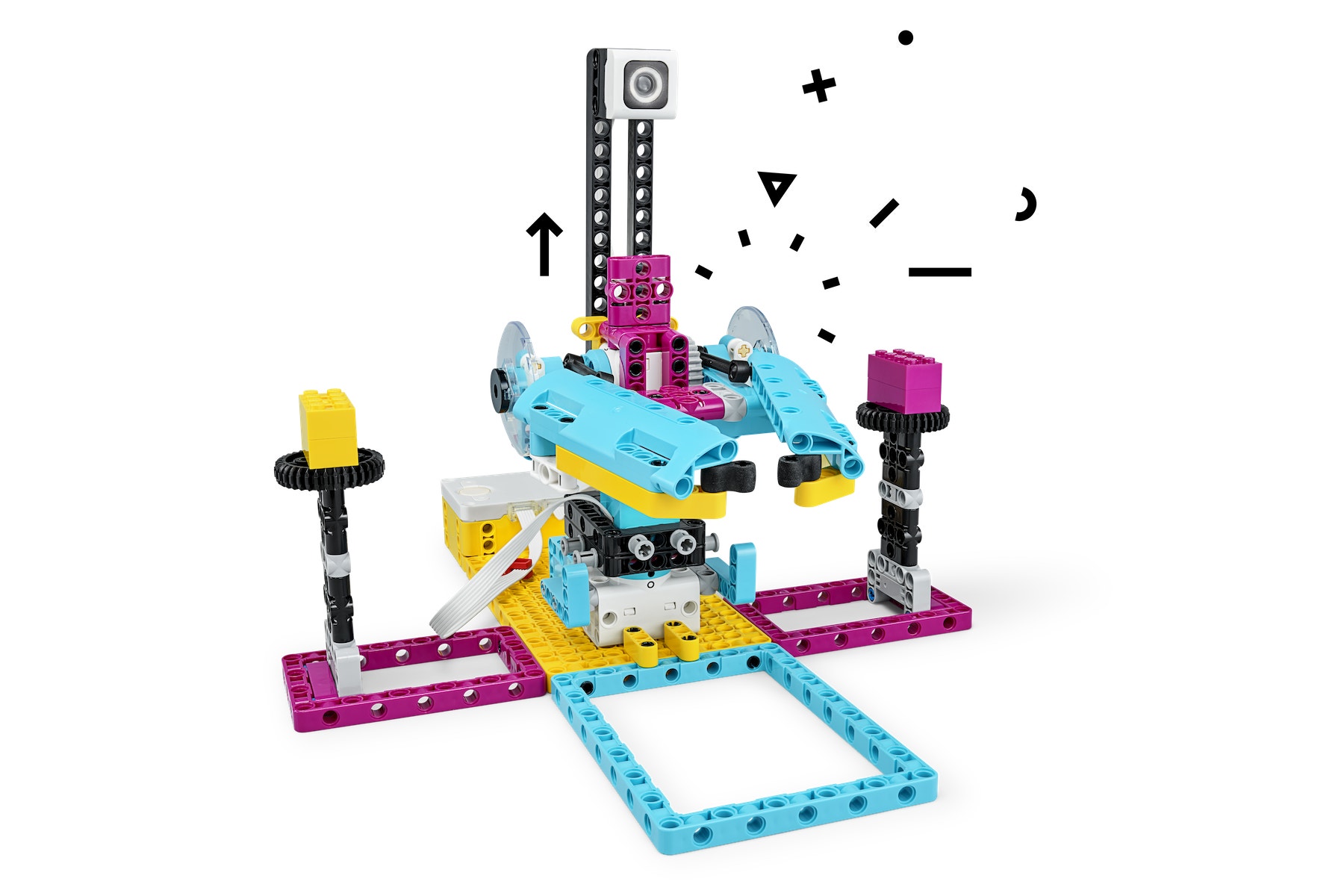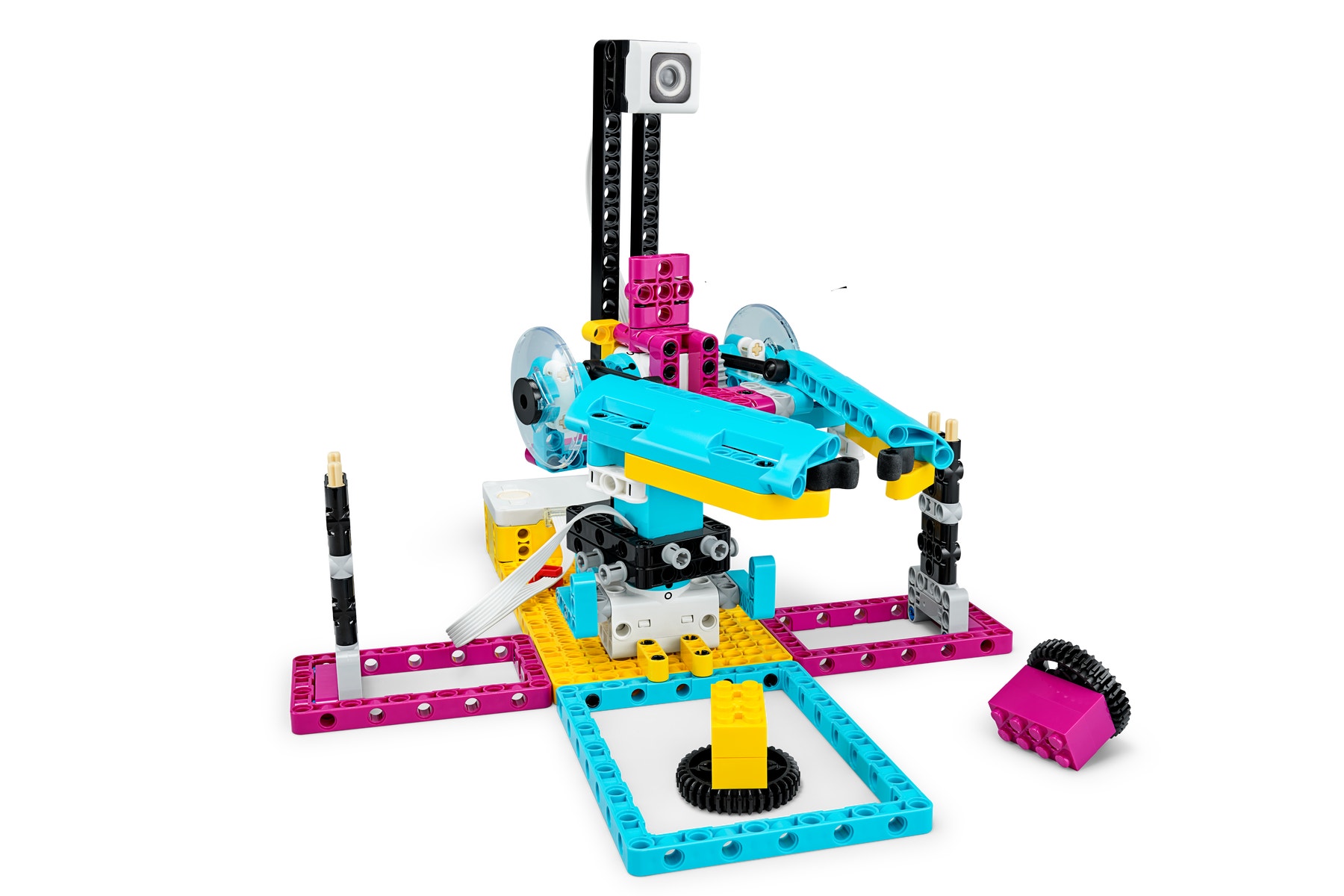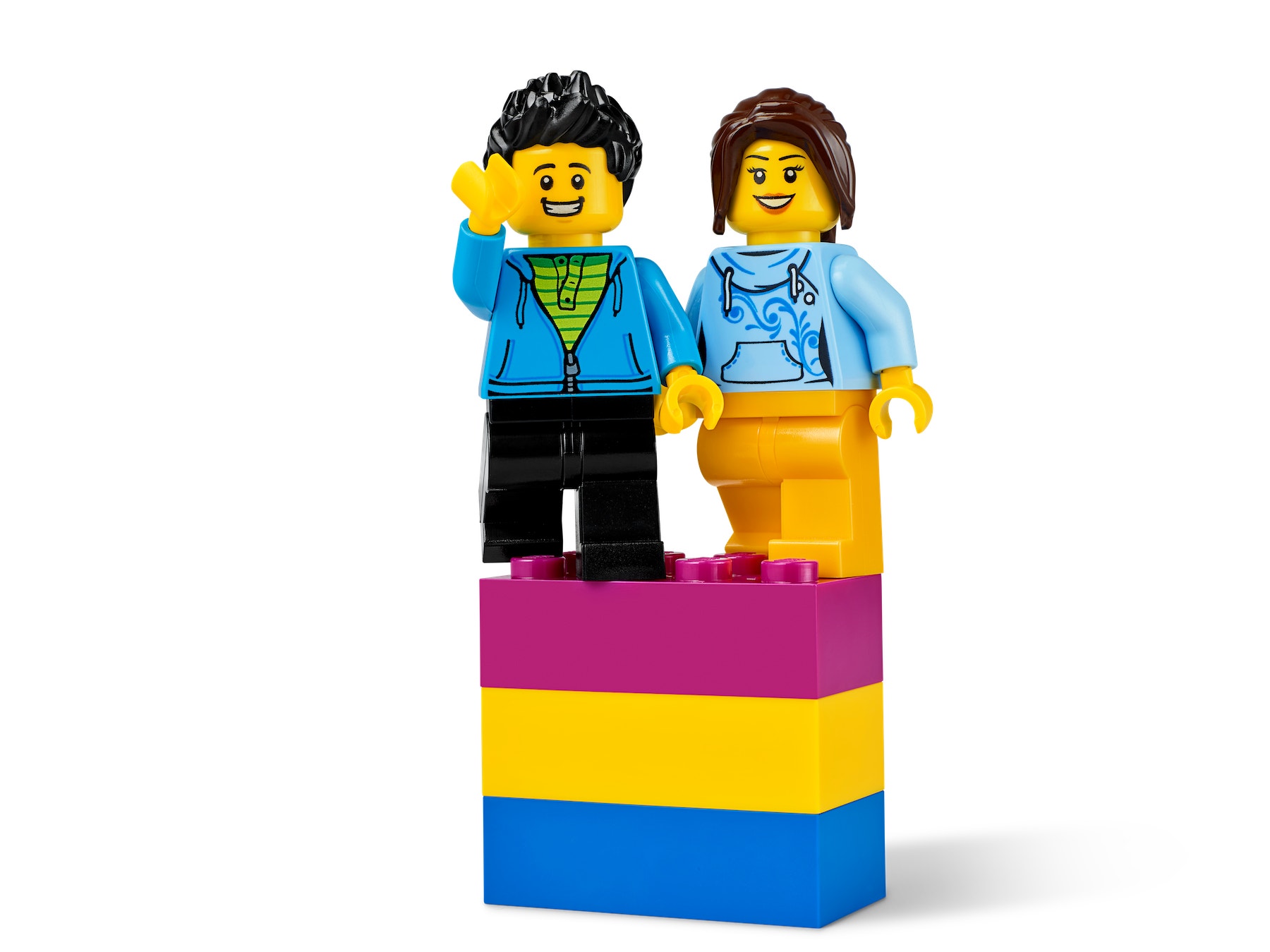Automate it!
Create and program an automated helper that can identify and ship the correct package based on color.

Lesson plan
1. Prepare
- Read through the student material in the LEGO® Education SPIKE™ App.
- Create a space for storing models between lessons.
- Prepare an Inventor Notebook with documenting questions to help your students keep track of their work. Look for inspiration in the Inventor Notebook provided.
Part A
2. ENGAGE (10 Min.)
- Use the ideas in the Ignite a Discussion section below to engage your students in a discussion related to this lesson.
- Explain the lesson, noting that this project will run for the next 2-3 class sessions.
3. Explore (35-55 Min.)
- Explain the problem your students are trying to solve.
- Give them some time brainstorm solutions.
- Ask them to create pseudocode for the actions they plan to program.
- Have them work in pairs to build their automated helper.
4. Explain (10 Min.)
- Ensure that your students are identifying and documenting any problems they're facing as they develop their solutions.
Part B
5. Elaborate (60 Min.)
- Have your students finalize their programs. Make sure to encourage collaboration between teams.
- Ask each team to present their solution to the class.
- Don't forget to leave some time for cleanup.
6. Evaluate
- Give feedback on each student's performance.
- You can use the assessment rubrics provided to simplify the process.
Ignite a Discussion
Start a discussion about robots by asking relevant questions, like:
- How do factory robots work?
- What do they detect? Colors? Shapes? Sizes?
- What kind of motorized mechanism does a factory robot use?
- How does the robot know where it is?
- What design features will guarantee that the robot’s movements are accurate and repeatable?
You can refer back to the Ideas, the LEGO Way lesson to refresh your students' memories on idea generation.
Building Tips
Open-Ended Solutions
This project is designed so that every student or team can have a unique solution.
Example Solution
Here's an idea you can use to inspire your students' design process.


Combining Models
Bring your classroom together by combining everyone's creation.

Coding Tips
Main Program

Differentiation
Simplify this lesson by:
- Having your students build the example solution to start, and then improve it
Take this lesson to the next level by:
- Having your students' program as many different functions as they can come up with
- Asking some teams to build delivery carts to connect the factory robots, creating the biggest automated factory ever!
Assessment Opportunities
Teacher Observation Checklist
Create a scale that matches your needs, for example:
- Partially accomplished
- Fully accomplished
- Overachieved
Use the following success criteria to evaluate your students' progress:
- Students can identify the key elements of a problem.
- Students are autonomous in developing a working and creative solution.
- Students can clearly communicate their ideas.
Self-Assessment
Have each student choose the brick that they feel best represents their performance.
- Blue: I've successfully created an automated helper.
- Yellow: I've successfully created an automated helper that creatively solves the problem.
- Violet: I've successfully created an automated helper that creatively solves the problem and I've presented my ideas clearly.
Peer-Assessment
Encourage your pupils to provide feedback to one another by:
- Having one pupil use the coloured brick scale above to score another pupil’s performance
- Asking them to present constructive feedback to one another so that they can improve their group’s performance during the next lesson

Language Arts Extension
To incorporate language arts skills development:
- Ask your students to use text, images, sketches, etc. to record their design process, creating an invention notebook to document their work.
- Have them present their projects to a wider audience (e.g., a school-wide assembly or by publishing online videos).
- Ask your students to create a website presenting their factory or business.
Career Links
Students who enjoyed this lesson might be interested in exploring these careers pathways:
- Business And Finance(Entrepreneurship)
- Information Technology (IT Applications)
- Manufacturing And Engineering (Pre-Engineering)
Teacher Support
Students will:
- Use computational thinking skills to produce a complete solution to a problem
Australian Curriculum: Technologies
ACTDIP027
Define and decompose real-world problems taking into account functional requirements and economic, environmental, social, technical and usability constraints
ACTDIP029
Design algorithms represented diagrammatically and in English, and trace algorithms to predict output for a given input and to identify errors
ACTDIP030
Implement and modify programs with user interfaces involving branching, iteration and functions in a general-purpose programming language
ACTDIP031
Evaluate how student solutions and existing information systems meet needs, are innovative, and take account of future risks and sustainability